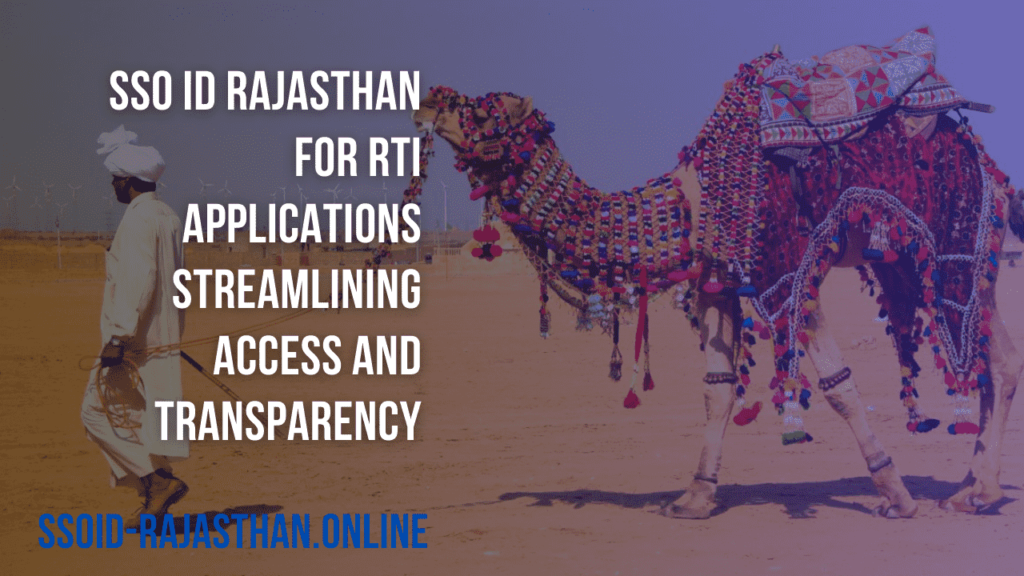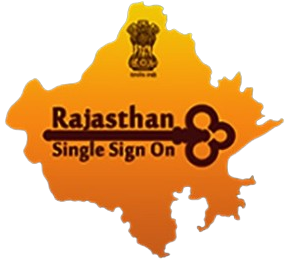The Right to Information (RTI) Act is a powerful tool for promoting transparency and accountability in government. In Rajasthan, the SSO ID (Single Sign-On ID) system has been integrated with the RTI application process to streamline access and make it more user-friendly. This article provides a detailed analysis of how SSO ID Rajasthan impacts RTI applications, discussing the key factors, tradeoffs, challenges, and implications of this system.

Introduction to SSO ID Rajasthan
The SSO ID Rajasthan is a unified platform introduced by the Rajasthan government to facilitate access to various e-services using a single login credential. This system simplifies interactions with multiple government departments, making processes like applying for RTI more efficient and accessible.
Key Factors Impacting SSO ID for RTI Applications
1. User Accessibility and Ease of Use
One of the most critical factors is the accessibility and ease of use of the SSO ID system. An intuitive interface ensures that users can easily navigate the platform to submit RTI applications. The system should provide clear instructions and a straightforward process for filing and tracking RTI requests.
2. Integration with RTI Departments
Seamless integration between the SSO ID system and RTI departments is essential for real-time updates and efficient processing. The integration ensures that RTI applications are promptly received, processed, and tracked through the system without delays.
3. Security and Data Privacy
Given the sensitive nature of RTI applications, robust security measures are crucial. The SSO ID system must ensure that user data is encrypted and protected against unauthorized access. Users must trust that their information is secure when submitting RTI requests through the platform.
4. Real-Time Status Tracking
Providing real-time status updates for RTI applications enhances transparency and user confidence. The ability to track the progress of applications ensures that users are informed about the status of their requests at every stage, from submission to resolution.
Tradeoffs in Balancing Different Factors
Simplified Interface vs. Comprehensive Features
While a simplified interface is essential for ease of use, it must balance with the need to offer comprehensive features. Users should find the system easy to navigate, yet robust enough to handle all aspects of the RTI application process, including filing, tracking, and receiving responses.
Real-Time Updates vs. System Performance
Real-time updates are beneficial for transparency but can impact system performance. Continuous data synchronization requires a robust infrastructure, which can be resource-intensive. Balancing the need for timely updates with maintaining system efficiency is a significant tradeoff.
Security vs. User Convenience
Implementing strong security measures is necessary to protect user data but can sometimes affect user convenience. For example, stringent authentication protocols may be perceived as cumbersome by users. Finding the right balance between security and ease of use is critical.
Challenges Associated with Different Approaches
Technical Integration
One of the primary challenges is integrating the SSO ID system with various RTI departments, each of which may have different databases and processing systems. Ensuring compatibility and seamless data exchange requires significant technical effort and coordination.
User Adoption
Encouraging users to adopt the SSO ID system for RTI applications can be challenging, particularly among those unfamiliar with digital processes. Providing adequate support and resources, such as tutorials and customer service, is essential to drive adoption.
Maintaining Data Accuracy
Ensuring data accuracy and consistency across the SSO ID system and RTI departments is crucial. Any discrepancies can lead to incorrect status updates and user dissatisfaction. Implementing rigorous data validation and synchronization processes is necessary to maintain accuracy.
Importance of Considering the Impact
Enhancing User Experience
The SSO ID system’s impact on user experience is significant. By providing a streamlined, efficient process for RTI applications, the system enhances user satisfaction and encourages more citizens to exercise their right to information.
Promoting Transparency and Accountability
The integration of the SSO ID system with RTI applications promotes greater transparency and accountability within government departments. Real-time tracking and updates ensure that the process is transparent, reducing opportunities for corruption and inefficiency.
Improving Administrative Efficiency
For government departments, the SSO ID system can lead to increased administrative efficiency. By centralizing the RTI application process, departments can streamline workflows, reduce redundancy, and allocate resources more effectively.
Conclusion
The SSO ID Rajasthan system significantly enhances the RTI application process by providing a user-friendly platform for submitting and tracking requests. While there are several key factors to consider, including user accessibility, integration, security, and real-time updates, balancing these elements is crucial for a successful system. The tradeoffs between simplified interfaces and comprehensive features, real-time updates and system performance, and security and user convenience must be carefully managed.
Despite the challenges, the SSO ID system’s positive impact on user experience, transparency, accountability, and administrative efficiency makes it a valuable tool for promoting good governance. By addressing these factors and overcoming associated challenges, the Rajasthan government can ensure that the SSO ID system continues to be an effective platform for RTI applications, fostering greater trust and engagement among citizens.
What is the SSO ID Rajasthan?
The SSO ID Rajasthan is a unified platform introduced by the Rajasthan government that allows citizens to access various e-services with a single login credential. It simplifies interactions with multiple government departments.
How does SSO ID help with RTI applications?
The SSO ID system streamlines the RTI application process by providing a single platform for submitting, tracking, and receiving responses for RTI requests. It offers real-time updates and enhances transparency and efficiency.
How can I create an SSO ID?
To create an SSO ID, visit the official Rajasthan SSO portal (https://sso.rajasthan.gov.in/), click on the “Register” button, and follow the instructions to complete the registration process. You will need to provide personal details and create a user ID and password.
How do I submit an RTI application using my SSO ID?
After logging into the SSO portal with your credentials, navigate to the RTI application section. Follow the instructions to fill out and submit your RTI request. The system will guide you through the process.
How can I track the status of my RTI application?
Once you have submitted your RTI application, you can track its status by logging into the SSO portal. Navigate to the RTI application section, where you will find real-time updates on the progress of your request.
Is my personal information secure on the SSO portal?
Yes, the SSO portal uses robust encryption and security protocols to ensure that your personal information is protected. The system is designed to keep user data safe from unauthorized access.
Can I submit multiple RTI applications using the same SSO ID?
Yes, you can use your SSO ID to submit multiple RTI applications. The platform allows you to manage and track all your applications conveniently from a single account.
What should I do if I encounter issues while submitting or tracking my RTI application?
If you experience any problems, you can contact the SSO helpdesk for assistance. The portal usually has a support or contact us section where you can find customer service contact details.
Is there a fee for using the SSO ID system for RTI applications?
Creating an SSO ID and using it to submit RTI applications is free of charge. However, there might be specific fees associated with the RTI application process itself, depending on the nature of the request.
Can I access the SSO ID portal on my mobile device?
Yes, the SSO ID portal is mobile-friendly and can be accessed on smartphones and tablets. You can also download the official mobile app, if available, for easier access.
How often is the status of my RTI application updated on the SSO portal?
The status of your RTI application is updated in real-time, meaning any changes or progress are immediately reflected on the portal. This ensures you always have the most current information.
What are the benefits of using SSO ID for RTI applications?
Using the SSO ID for RTI applications offers several benefits, including a streamlined application process, real-time status updates, enhanced transparency, robust security, and the convenience of accessing multiple services with a single login.
Can businesses use the SSO ID system for RTI applications?
Yes, businesses can also use the SSO ID system to submit RTI applications relevant to their operations. The system is designed to cater to both individual citizens and organizations.
What happens if I forget my SSO ID or password?
If you forget your SSO ID or password, you can use the “Forgot User ID” or “Forgot Password” options available on the login page. Follow the instructions to reset your credentials by providing the necessary verification details.
Can I use my SSO ID to access other government services besides RTI applications?
Yes, the SSO ID allows you to access a wide range of e-services provided by the Rajasthan government, including applying for licenses, scholarships, certificates, and more.
